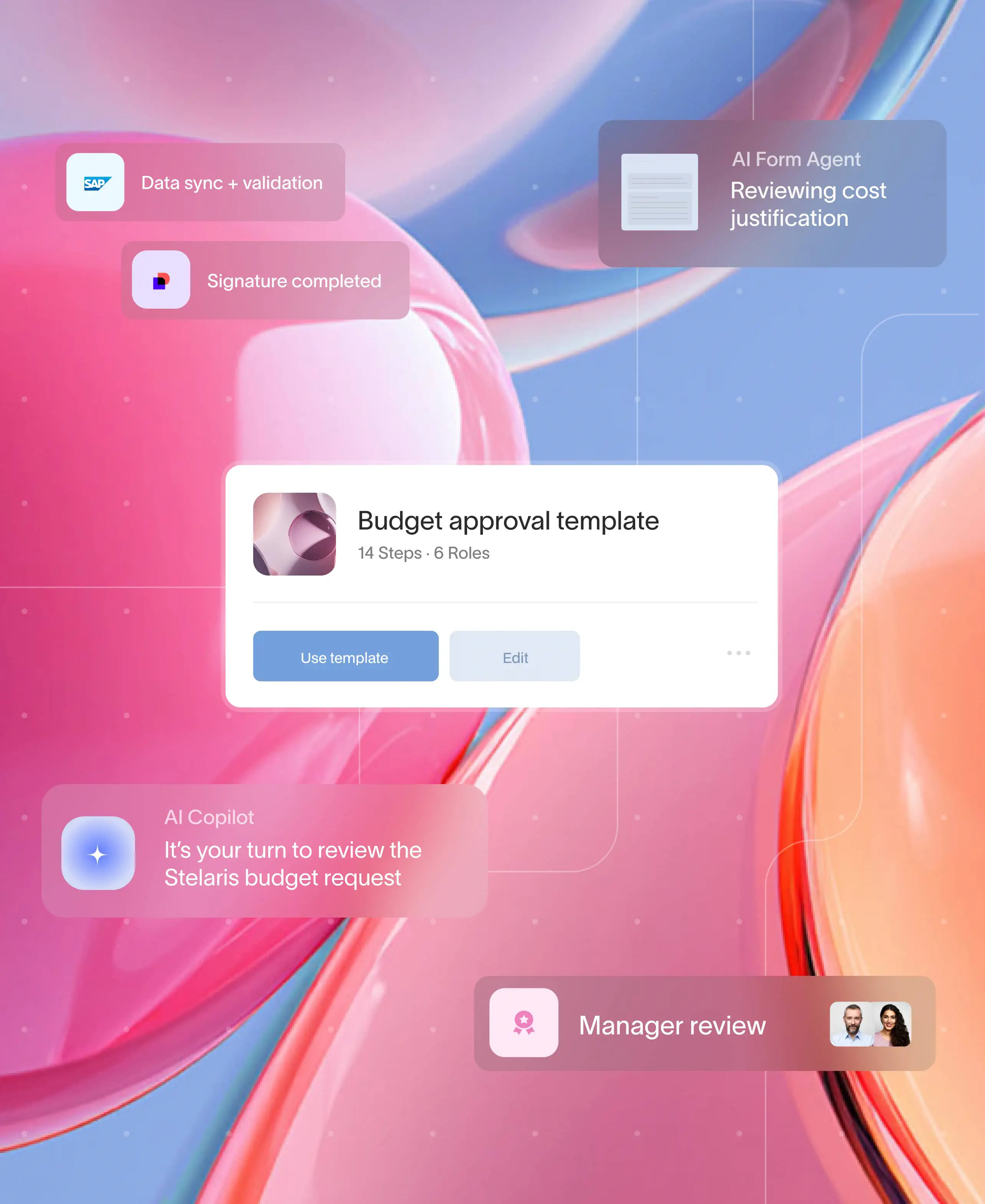
At a glance
Contracts are the lifeblood of business growth, yet many organizations struggle to manage them efficiently. It’s not unusual for a contract to sit untouched for weeks because someone didn’t realize they owed the next step. According to McKinsey, 61% of executives say ineffective contract processes cause delays that directly impact revenue.
A contract management workflow process provides the structure needed to keep deals moving. By defining every stage from drafting to renewal and ensuring accountability at each step, businesses can reduce risk, close deals faster, and improve client trust. In this article, we’ll break down what a contract management workflow process looks like, why traditional methods fail, and how modern orchestration platforms help businesses stay on track. For the bigger picture, see our complete guide to contract management workflow.
What is a contract management workflow process
The contract management workflow process is the defined series of steps an organization follows to create, review, approve, sign, and monitor contracts. Unlike a general “contract lifecycle,” which describes the beginning-to-end journey of an agreement, the workflow process focuses on the actions and approvals that keep contracts moving forward without delay.
Think of it as a playbook: it defines who drafts the agreement, who reviews it, when it gets sent for approval, and how it’s executed. With this structure in place, teams know their role, nothing falls through the cracks, and contracts stay aligned with business timelines.
Why traditional processes fall short
Even organizations that recognize the importance of workflows often manage them poorly.
Manual routing causes bottlenecks. Email-driven processes make it unclear who owns the next action. Contracts end up buried in inboxes.
Version control becomes chaos. Multiple copies of the same contract circulate, leaving teams unsure which one is the latest.
External stakeholders get left out. Vendors, clients, and partners are forced into side channels like email, slowing down negotiation and approvals.
Compliance is an afterthought. Without audit trails, companies can’t prove who made changes or when they were approved.
These weaknesses don’t just waste time — they expose organizations to risk and cause measurable revenue delays.
The hidden benefits of a strong workflow process
When businesses implement a clear workflow process, the benefits extend beyond speed:
- Fewer delays. Every stakeholder knows when they must act.
- Improved compliance. Audit-ready trails provide visibility into decisions.
- Higher client satisfaction. Contracts reflect professionalism and reliability.
- Better scalability. Teams can handle larger contract volumes without added headcount.
Learn how Moxo’s orchestration platform supports client-facing workflows.
Real-world example: keeping procurement on track
A global retailer manages hundreds of supplier contracts each year. Previously, procurement agreements would take weeks to finalize because approvals had to be chased across finance and legal teams. By implementing a contract management workflow process with defined steps and client-facing collaboration, approvals became seamless, renewals were tracked automatically, and contracts closed 40% faster.
What to look for in a workflow process platform
When designing or upgrading your contract management workflow process, look for solutions that:
Centralize collaboration so all revisions, comments, and approvals happen in one place.
Support external stakeholders with a client-friendly interface.
Provide audit-ready tracking for compliance.
Automate reminders and escalations so nothing stalls.
Moxo’s workflow orchestration platform was designed for these multi-party processes. By combining automation, human approvals, and AI-driven nudges, it ensures that deals stay on track from draft to renewal.
Best practices for staying on track
- Start with standardized templates. This ensures consistency across contracts.
- Define clear approval paths. Each stakeholder should know when and how they will engage.
- Use automation for reminders. Intelligent nudges prevent forgotten tasks.
- Review workflows regularly. Analyze where contracts are stalling and refine.
For more on streamlining approvals, see our article on workflow for contract management.
Frequently asked questions
What is the difference between a contract lifecycle and a contract workflow process?
The lifecycle refers to the full lifespan of a contract, from creation to renewal. The workflow process defines the structured steps and approvals needed to move it along.
How can businesses measure the success of a contract workflow process?
Key metrics include cycle time, compliance rates, and the number of contracts closed without delay.
Do small businesses need a contract workflow process?
Yes. Even with lower contract volume, a structured workflow reduces delays, protects compliance, and creates a more professional client experience.
Can workflow processes integrate with existing systems?
Modern orchestration platforms integrate with CRMs, financial tools, and document management systems to ensure contracts fit seamlessly into existing processes.
Keep every contract moving
A strong contract management workflow process prevents bottlenecks, reduces risk, and keeps deals on track. Moxoenables businesses to orchestrate contracts end-to-end with client-facing collaboration, audit-ready tracking, and intelligent nudges. Book a 15 minute demo and discover how Moxo can help you manage contracts with confidence.





